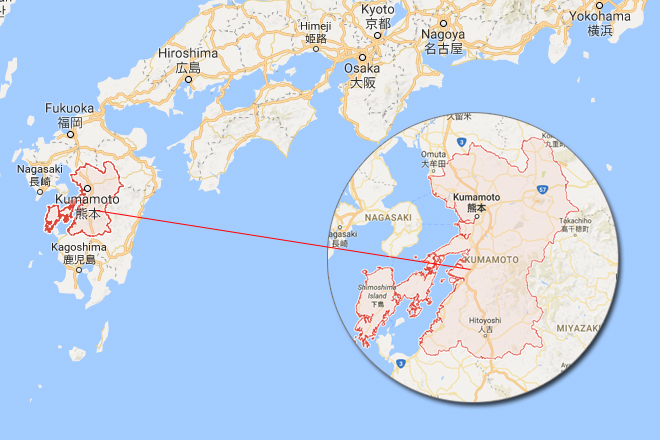Kumamoto pottery hit by quakes to be reborn with lacquer
September 7, 2017
Kanazawa- Akira Otaguro was organizing an online photo exhibition of pottery works with a potter friend in Kumamoto Prefecture when a series of powerful earthquakes jolted southwestern Japan in April last year.
After learning that many pottery items produced by his friend had broken in the Kumamoto quakes, including 6.5- and 7.3-magnitude temblors, Otaguro came up with a project to restore pottery broken in the disaster by employing a traditional lacquering technique.
The city of Wajima, Ishikawa Prefecture, decided to push ahead with the project using "furusato nozei" hometown donations. The city, known for "Wajima-nuri" lacquerware, was itself hit hard by a 6.9-magnitude quake in 2007 off the Noto Peninsula.
In the project, Wajima-nuri artisans put together pieces of broken pottery with lacquer to make them into new pieces, aiming for early reconstruction of disaster areas.
"We want to demonstrate that Japan has been reborn a number of times from disasters," said Otaguro, a producer of television programs in Yokohama, south of Tokyo. His hometown is in Kumamoto Prefecture.
Five Kumamoto potters became interested in Otaguro's idea of remaking broken items with Japanese lacquer and gave him 48 liters of pottery fragments free of charge.
Enchanted by the Wajima-nuri custom of continuing to use wares after repair, Otaguro asked artisans of the lacquering technique to join the project.
Using the "kin tsugi" technique of connecting fragments with Japanese lacquer, artisans repair the joints with gold powder and draw designs on the ware surface with gold or silver powder to make five products including a tea bowl.
Wares to be produced under the project will be named "Gotorin," linking the five potters with Wajima-nuri artisans.
A prototype tea bowl, "Yoshizakura," with a picture of cherry blossoms at iconic Kumamoto Castle has been already created. Other planned products include a tea bowl with the theme of Mount Aso in Kumamoto Prefecture.
The products will go on display at exhibitions in Kumamoto and Ishikawa prefectures and Tokyo soon after completion. Otaguro is also considering overseas publicity.
The city of Wajima will use the furusato nozei hometown donation system, under which people can make donations to local governments of their choice, to collect 10 million yen for the project by the end of September. The city will prepare 30 limited-item Gotorin chopsticks rests in return.
"We hope that this project will be a good example of uses for furusato nozei donations," said an official of the city government.
Tatsuya Goshima, a 36-year-old white porcelain potter in the Kumamoto city of Yamaga, was unable to dispose of some 250 pottery works broken in the earthquakes and provided the fragments for the project.
"I'm now looking forward to seeing how the pieces will be reborn," Goshima said. "I hope to meet the Wajima-nuri artisans," he added, expecting the project to create a new form of traditional craft.
Natsue Inami, a 44-year-old artist of "makie" lacquer designs sprinkled with gold or silver powder, is one of the artisans in Wajima who took part in the project. She hopes it will make Wajima-nuri more widely known.
"This is a wonderful idea," Inami said. "I hope that the project will be an opportunity for the artisans to get to know each other and cheer up everyone." Jiji Press
Latest Videos
- THE UNTOLD STORY EXPERT INSIGHTS INTO THE UKRAINE
- NEGOTIATING A NEW ORDER US RUSSIA TALKS ON UKRAIN
- Ukraine: A Pawn in the Geopolitical Game? Will Trump Intervene?
- US VP VANCE CRITICIZES EUROPEAN DEMOCRACIES AT MUNICH SECURITY CONFERENCE
- UNCOVERING THE WEB OF DECEIT: CIA INFILTRATION OF THE MEDIA
- SHIFTING SANDS: TULSI GABBARD’S CONFIRMATION AND THE EVOLVING GLOBAL LANDSCAPE
- FAUCI SCANDAL: A THREAT TO GLOBAL HEALTH AND DEMOCRACY






